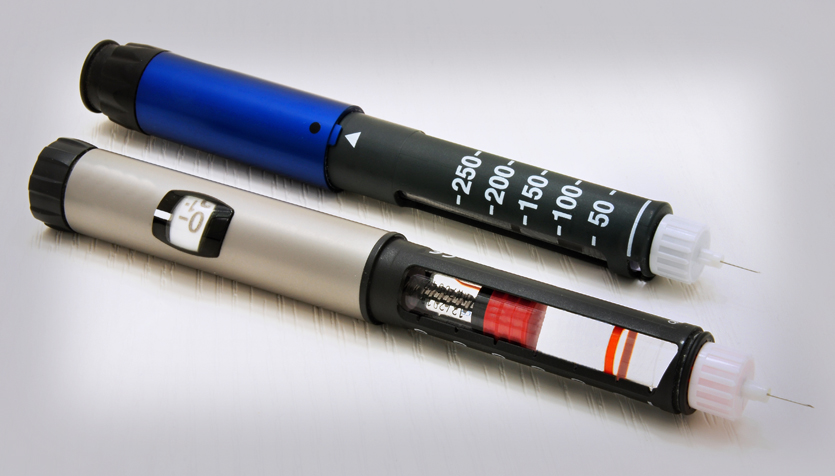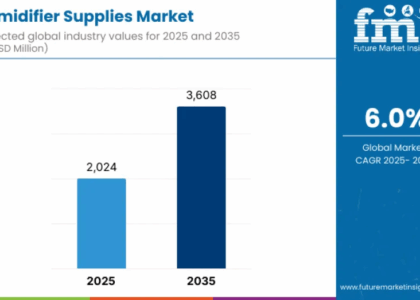The global insulin delivery pen market is estimated to record a CAGR of 8.1% from 2024 to 2034. This is likely to take the market value from an estimated USD 26,408.7 million in 2024 to a projected USD 57,544.5 million by 2034. Growth is likely to be fostered by a confluence of factors setting demand.
The insulin delivery pens market is an essential segment of the diabetes care industry, offering innovative and convenient solutions for insulin administration. Insulin delivery pens provide patients with a portable, easy-to-use alternative to traditional syringes and vials, improving adherence to insulin therapy and enhancing overall treatment outcomes. These devices come in various designs, including disposable and reusable pens, and are increasingly favored for their precision, ease of dosing, and discreet usage. As the global prevalence of diabetes continues to rise, the demand for efficient insulin delivery methods like insulin delivery pens is expanding rapidly.
This market caters to both type 1 and type 2 diabetes patients who require regular insulin administration to manage their blood glucose levels. The advancement in pen technology, including features like dose memory, digital interfaces, and connectivity with health apps, is further boosting the popularity of insulin delivery pens. With a focus on patient comfort, safety, and accurate dosing, the market is evolving to meet the diverse needs of diabetic populations worldwide.
Get Sample Report: – https://www.futuremarketinsights.com/reports/sample/rep-gb-5605
Market Trends
Several notable trends characterize the insulin delivery pens market today. A significant shift is happening toward smart insulin pens, which integrate digital technology to monitor doses and insulin usage patterns. These pens often connect with mobile applications, providing users and healthcare professionals with real-time data that can optimize diabetes management.
Additionally, the increasing preference for reusable insulin pens over disposable ones reflects a growing environmental awareness among consumers and healthcare providers. Reusable pens, combined with replaceable insulin cartridges, reduce medical waste and often provide better cost-efficiency over time.
Personalization is another emerging trend. Insulin delivery pens are being designed to cater to different user preferences, including varying dose increments, ergonomic shapes, and user-friendly interfaces to accommodate elderly or visually impaired patients. Moreover, manufacturers are focusing on enhancing the aesthetics and portability of these devices to align with patients’ lifestyles, thus encouraging adherence to therapy.
Driving Forces Behind Market Growth
The primary drivers of growth in the insulin delivery pens market are the rising incidence of diabetes worldwide and the increasing awareness about advanced diabetes management solutions. As diabetes prevalence escalates due to factors such as sedentary lifestyles, unhealthy diets, and genetic predispositions, the need for efficient insulin delivery devices becomes more urgent.
Furthermore, healthcare initiatives promoting early diagnosis and effective treatment of diabetes are encouraging the adoption of innovative delivery systems like insulin pens. Patients and healthcare providers recognize the benefits of insulin delivery pens in improving adherence and reducing injection-related anxiety.
Technological advancements in pen design and smart connectivity are also playing a crucial role in market expansion. The ability to track doses, prevent errors, and integrate with digital health platforms offers an appealing advantage that attracts a growing user base. Insurance coverage improvements and reimbursement policies for insulin pens in many regions also facilitate wider accessibility and affordability, further fueling market growth.
Challenges and Opportunities
Despite the positive outlook, the insulin delivery pens market faces certain challenges that require attention. Cost remains a significant barrier in some low- and middle-income regions, where the price of insulin pens and cartridges can be prohibitive compared to traditional syringes. Limited awareness and acceptance of insulin pens among some patient populations also hamper market penetration.
Additionally, regulatory hurdles and stringent quality standards may slow down the introduction of new pen models, especially those incorporating advanced technology. Ensuring compatibility with different insulin types and cartridges, along with maintaining device reliability and safety, requires rigorous testing and approvals.
Nevertheless, these challenges also open doors for opportunities. Emerging markets with increasing diabetes prevalence represent vast untapped potential for insulin delivery pen manufacturers. Localized production and cost-effective device designs could significantly increase penetration in these regions.
Moreover, continuous innovation in smart pen technology and integration with telehealth platforms creates new avenues for enhancing patient care and engagement. Collaborations between pharmaceutical companies, tech firms, and healthcare providers could lead to holistic diabetes management solutions that leverage insulin delivery pens as a central component.
Recent Industry Developments
Recent developments in the insulin delivery pens market highlight a focus on digital integration and patient-centric features. Companies are launching smart pens equipped with Bluetooth connectivity, dose tracking, and reminders to reduce missed or incorrect doses. Such devices not only improve compliance but also enable healthcare providers to remotely monitor patient data and adjust treatment plans effectively.
Another notable advancement is the introduction of pens compatible with biosimilar insulins, expanding options for cost-conscious patients and payers. Manufacturers are also investing in research to develop pens with smaller needle sizes and improved pain-reducing technologies, addressing common patient concerns about injection discomfort.
Strategic partnerships between medical device companies and software developers are accelerating the rollout of comprehensive diabetes management systems that combine insulin delivery pens with glucose monitoring and data analytics platforms. This integrated approach enhances the overall patient experience and outcomes.
Regional Analysis
The insulin delivery pens market exhibits varying dynamics across different regions. Developed regions such as North America and Europe lead in market adoption due to higher healthcare spending, widespread diabetes awareness, and advanced healthcare infrastructure. These regions benefit from robust reimbursement policies and strong demand for technologically advanced insulin pens.
In contrast, Asia-Pacific and Latin America are witnessing rapid market growth driven by rising diabetes prevalence and expanding healthcare access. However, affordability and awareness issues still pose challenges in these regions. Governments and non-governmental organizations are actively promoting diabetes education and subsidizing advanced treatment options, which is gradually improving market conditions.
Emerging markets in Africa and the Middle East offer promising growth potential, with increasing efforts to improve healthcare delivery and chronic disease management. As access to insulin and modern delivery devices improves, the insulin delivery pens market is expected to gain momentum in these areas.
Competitive Outlook
The insulin delivery pens market is competitive and characterized by continuous innovation and strategic moves by key players. Companies are investing heavily in research and development to differentiate their products with enhanced features and better usability. The competitive landscape is also shaped by mergers, acquisitions, and partnerships aimed at expanding product portfolios and geographic reach.
Product launches focusing on smart technology and patient-friendly designs help companies maintain their market share and attract new users. The ability to quickly adapt to evolving patient needs and regulatory requirements is a crucial factor for success.
Brand reputation, quality assurance, and effective marketing strategies also influence the competitive dynamics. Players that build strong relationships with healthcare providers and insurers tend to perform better by securing favorable distribution channels and reimbursement agreements.
Top Companies
Several leading companies dominate the insulin delivery pens market, leveraging their expertise in medical devices and diabetes care. These organizations are recognized for their innovation, quality products, and extensive global presence. They consistently introduce new and improved pen designs that address patient needs for convenience, accuracy, and comfort.
Many top companies collaborate with insulin manufacturers to ensure compatibility and optimize the performance of their delivery devices. By investing in clinical studies and user feedback, they continuously enhance the safety and efficacy of their pens.
These industry leaders often engage in strategic partnerships and acquisitions to expand their technology offerings and enter emerging markets. Their strong financial resources enable them to sustain significant research investments and aggressive marketing campaigns, reinforcing their market positions.
Explore In-Depth Analysis-Click Here to Access the Report:- https://www.futuremarketinsights.com/reports/insulin-delivery-pens-market
Segmentation Outlook
The insulin delivery pens market is segmented based on product type, end-user, and distribution channel. Product-wise segmentation includes reusable pens and disposable pens, each catering to different patient preferences and needs. Reusable pens are favored for their sustainability and long-term cost-effectiveness, while disposable pens appeal to users seeking simplicity and convenience.
End-user segmentation divides the market between hospitals, clinics, homecare settings, and pharmacies. The increasing trend toward home-based diabetes management is driving demand for user-friendly insulin delivery pens that patients can operate independently.
Distribution channels include retail pharmacies, online stores, and direct sales through healthcare providers. The rise of e-commerce and telemedicine platforms has opened new avenues for insulin pen distribution, improving accessibility for remote and underserved populations.
About Future Market Insights (FMI)
Future Market Insights, Inc. (ESOMAR certified, recipient of the Stevie Award, and a member of the Greater New York Chamber of Commerce) offers profound insights into the driving factors that are boosting demand in the market. FMI stands as the leading global provider of market intelligence, advisory services, consulting, and events for the Packaging, Food and Beverage, Consumer Technology, Healthcare, Industrial, and Chemicals markets. With a vast team of over 400 analysts worldwide, FMI provides global, regional, and local expertise on diverse domains and industry trends across more than 110 countries.
Contact Us:
Future Market Insights Inc.
Christiana Corporate, 200 Continental Drive,
Suite 401, Newark, Delaware – 19713, USA
T: +1-347-918-3531
For Sales Enquiries: sales@futuremarketinsights.com
Website: https://www.futuremarketinsights.com
LinkedIn| Twitter| Blogs | YouTube






